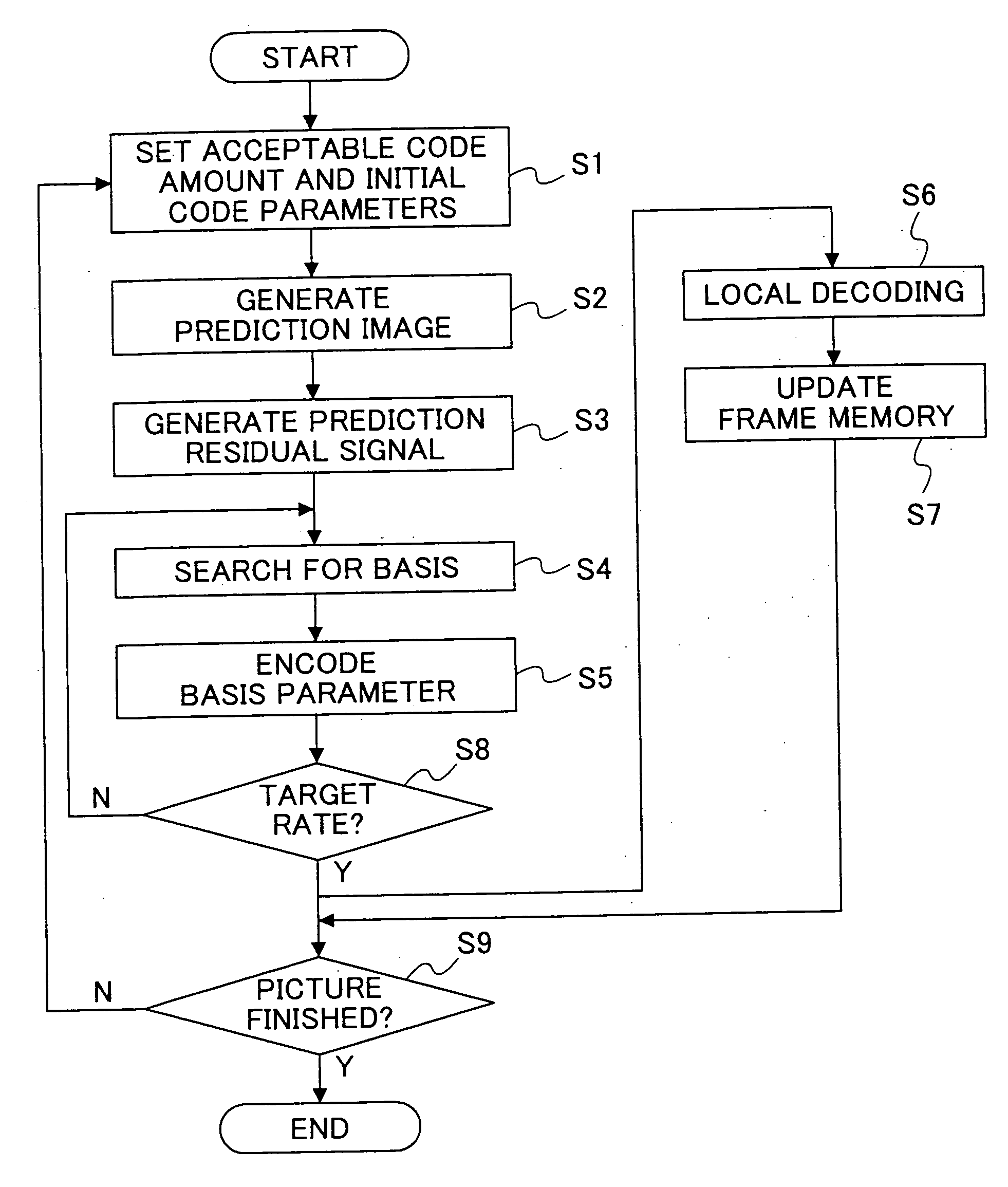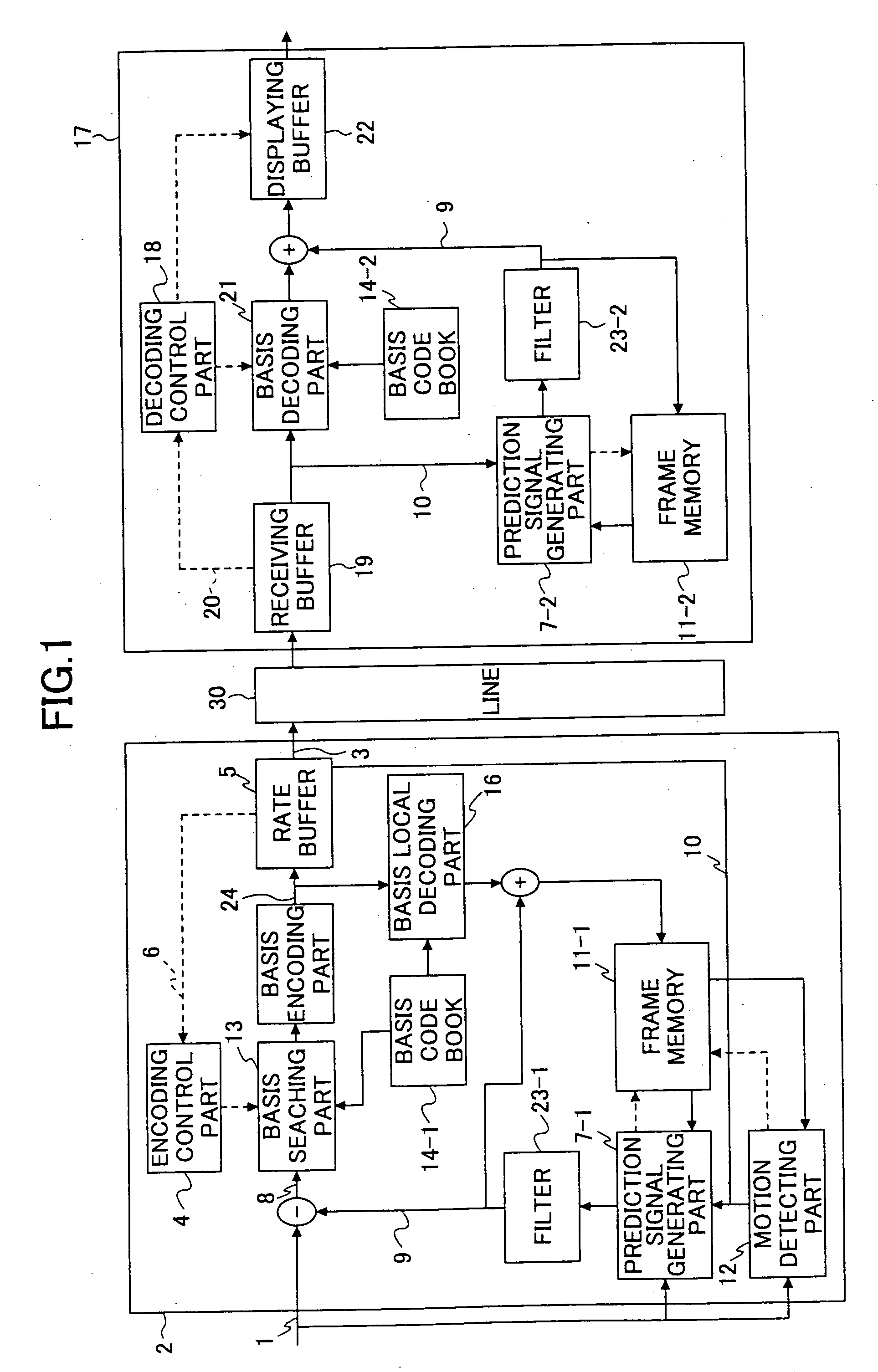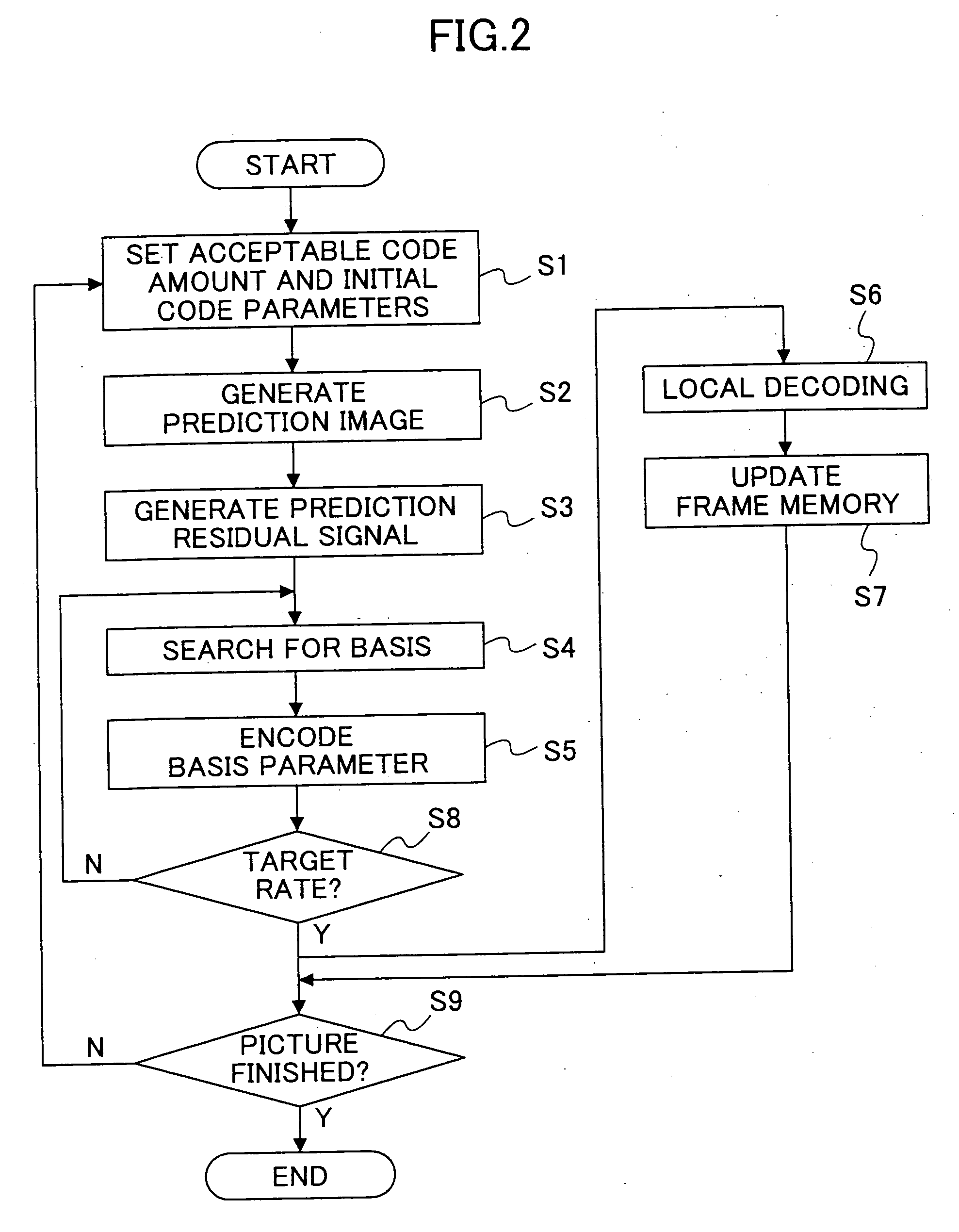Image encoding method and image encoder, image decoding method and image decoder, and image processing system
a technology of image encoding and encoder, applied in the field of image encoding method and image encoder, image decoding method and image decoder, image processing system, can solve the problems of inability to reconstruct important bases to intrinsic signal representations, dct has the tendency to notice the distortion caused by quantization in the boundary of blocks, and coarse quantization degrades a reconstruction of coefficients. to achieve the effect of improving the efficiency of total coding
- Summary
- Abstract
- Description
- Claims
- Application Information
AI Technical Summary
Benefits of technology
Problems solved by technology
Method used
Image
Examples
first embodiment
[0054] For example, an image encoder and an image decoder according to the present invention are constructed as is shown in FIG. 1. In the example, the “Matching Pursuits” (pattern matching) technique is used to perform a single layer picture encoding and decoding.
[0055] In FIG. 1, an image encoder 2 comprises an encoding control part 4, a rate buffer 5, a prediction signal generating part 7-1, a frame memory 11-1, a motion detecting part 12, a basis searching part 13, a basis code book 14-1, a basis encoding part 15, a basis local decoding part 16 and a filter 23-1. Also, an image decoder 17, which is connected with the image encoder 2 via a predetermined line 30, comprises a decoding control part 18, a receiving buffer 19, a basis decoding part 21, a displaying buffer 22, a filter 23-2, a frame memory 11-2, a prediction signal generating-part 7-2 and a basis code book 14-2.
[0056] In the following, a description will be given of an operation on the image decoder 2 (encoding proced...
second embodiment
[0088] A description will now be given of an image encoder and an image decoder according to the present invention. Especially in this embodiment, a description will be given of an example of an image encoder and an image decoder to perform a quality hierarchical encoding and a transmission by using the “Matching Pursuits”. In the image encoder and the image decoder according to the embodiment, the “Matching Pursuits” provides a basis representation of an encoding distortion signal, which is transmitted as additional information. As a result, when a line in use has a good condition, it becomes possible to transmit a high quality picture.
[0089]FIG. 8 shows a structure of the image encoder and the image decoder according to the embodiment of the present invention.
[0090] In FIG. 8, the image encoder comprises an encoding control part 111, a base-layer encoding part 102, a base-layer local decoding part 103, a base-layer frame memory 104-1, an enhance-layer encoding part 106 and a rate...
third embodiment
[0103] A description will now be given of an image encoder and an image decoder according to the present invention.
[0104] In this embodiment, a description will be given of another example of an image encoder and an image decoder to perform a quality hierarchical encoding and a transmission by using the “Matching Pursuits”. In the image encoder and the image decoder according to the embodiment, unlike the second embodiment of the present invention, an encoding distortion signal to be encoded is divided into a plurality of classes of signal patterns, and a signal pattern is classified without the use of additional information with reference to code parameters in the base layer. A control part is designed to use a code book aiming at an individual pattern. As a result, it is possible to perform the “Matching Pursuits” encoding more efficiently.
[0105]FIG. 11 shows a structure of the image encoder and the image decoder according to the embodiment of the present invention, wherein those...
PUM
 Login to View More
Login to View More Abstract
Description
Claims
Application Information
 Login to View More
Login to View More - R&D
- Intellectual Property
- Life Sciences
- Materials
- Tech Scout
- Unparalleled Data Quality
- Higher Quality Content
- 60% Fewer Hallucinations
Browse by: Latest US Patents, China's latest patents, Technical Efficacy Thesaurus, Application Domain, Technology Topic, Popular Technical Reports.
© 2025 PatSnap. All rights reserved.Legal|Privacy policy|Modern Slavery Act Transparency Statement|Sitemap|About US| Contact US: help@patsnap.com



